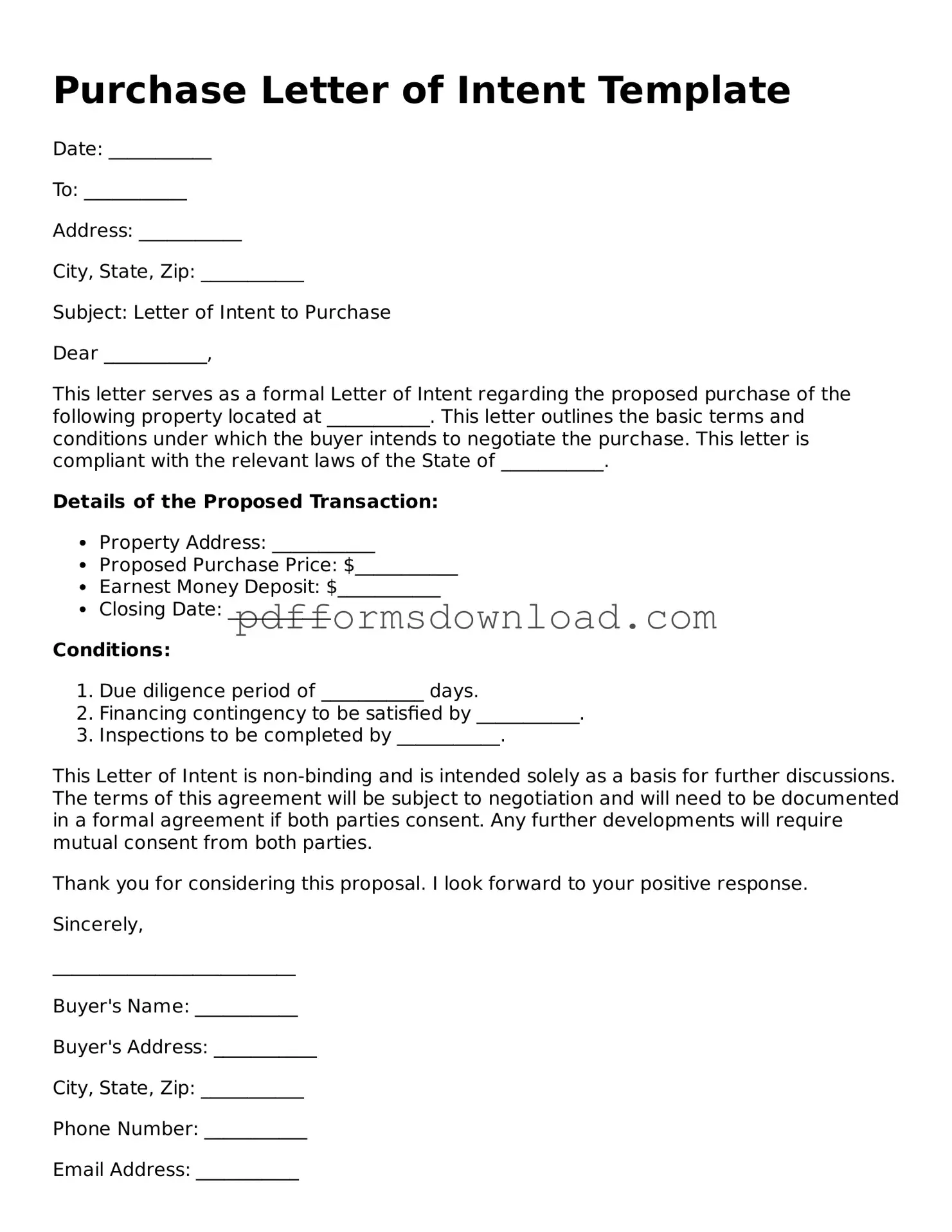What is a Purchase Letter of Intent?
A Purchase Letter of Intent (LOI) is a preliminary document that outlines the intentions of one party to purchase a property or business from another party. It serves as a starting point for negotiations and typically includes key terms such as the purchase price, payment structure, and any conditions that must be met before the sale can proceed.
Why is a Purchase Letter of Intent important?
This document is important because it helps to clarify the intentions of both the buyer and the seller before entering into a formal agreement. It can prevent misunderstandings and provide a framework for negotiations. Additionally, an LOI can demonstrate to third parties, such as lenders or investors, that serious discussions are underway.
Is a Purchase Letter of Intent legally binding?
Generally, a Purchase Letter of Intent is not legally binding, meaning that it does not create a legal obligation to complete the purchase. However, certain provisions within the LOI, such as confidentiality clauses or exclusivity agreements, may be binding. It is essential to clarify which parts of the LOI are intended to be enforceable.
What should be included in a Purchase Letter of Intent?
A well-crafted Purchase Letter of Intent should include several key elements: the names of the parties involved, a description of the property or business being sold, the proposed purchase price, any contingencies or conditions, and a timeline for completing the sale. Additionally, it may outline any due diligence requirements and how the parties will handle confidentiality.
How does a Purchase Letter of Intent affect the negotiation process?
The Purchase Letter of Intent can significantly influence the negotiation process. By outlining the main terms and intentions, it helps both parties focus on critical issues. This clarity can lead to more efficient discussions and help identify areas where compromise may be needed. It sets the tone for a collaborative approach to finalizing the sale.
Can a Purchase Letter of Intent be modified?
Yes, a Purchase Letter of Intent can be modified. If both parties agree to changes, they can amend the LOI to reflect new terms or conditions. It’s important to document any modifications in writing to ensure that both parties have a clear understanding of the revised agreement. This helps maintain transparency and trust throughout the negotiation process.
